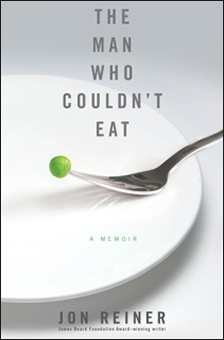
Hardcover, paperback, eBook
and audiobook available in
stores and online.
Buy now at:
Amazon.com
Barnes & Noble
IndieBound
iBookstore
Condoms, a motherload. This is a mind bender.
At first look, in the packaged-goody overgrowth freighting the shelves of the Costco in East Harlem, these condoms mess with the store’s potato-salad mojo. It’s my first time here. There’s one make and model stocked in the warehouse – Trojan Lubricated, unribbed – and they come as a 40-count in a box the length of a toaster oven. No potential for sticky fingers here. Hung beside a display of First Response Home Pregnancy Test 20-packs and 300-count boxes of non-latex Exam Gloves, the condoms sell for $7.99, shaming the $3.99 Trojan three-counts that Duane Reade extorts to the horny on every other block in the city. Do the math; it’s an orgy of economy: seven ninety-nine for 40? That’s 20 cents a rubber! Call the Kardashians and get the party started. Having questioned the logic of edgeless Costco in edgy Manhattan, the reality is even more bizarre than imagined, like the roller derby resurgence, but with acres of mall parking. Big-box Trojans; who knew?
The prior invasions of Bed, Bath and Beyond and Buy, Buy Baby into Manhattan signaled the transformation of the City as Suburb, and, now, Coscto cements the triumph of the City as PX. From an apron of poured concrete hard by the wheezing FDR Drive, Costco rises in brick sheets like a Civil War armory. They’re not selling the view. For years Costco had been jonesing to establish a fort in Manhattan, where they could traffic 50-pound bags of rice to the retailer’s wet dream of upscale consumers. Imagine the company’s temptation back in HQ: “Those Manhattan Deep-pockets get hot flashes spending millions for glorified closets; they’ll go mental over $2 Froot Loops.”
Victory can be difficult, though, in a post-Colonial era (see “Cheney, Iraq and ‘Liberators’”). Costco built its mammoth business selling provisions like tomato sauce in gallon paint cans to eager civilians with cars and driveways and kitchen cabinets and pantries. What did the big-boxers know about the buying habits of New Yorkers for whom the wedge between the refrigerator and the back door doubles as a broom closet? Who in Manhattan has the space or wants a 64-ounce tub of mayonnaise, with little prospect of finishing the glop before the half-life kicks-in. This is a city where groundlings at the grocery deli counter insist on, “Exactly four slices of turkey breast!” Forget about the radiated mayo jug – how many condoms, even for sexed-up, cocktailed, lotus-eating New Yorkers, are enough? Well, it has been two years since Costco commissioned its post exchange by the highway. Post-colonialism, my ass.
There is no Costco without a car. Traveling by bus, deposited a long block from the store’s windowless entrance, is to be marooned in a no man’s land wandering on the wrong side of destiny. The five-story garage elbowing the Costco mall is fat with SUVs and station wagons waved-in by uniformed traffic guards who don’t seem to have ever known a pedestrian.
Inside, there is but the faintest lip service paid to the food that makes New York an ethnic-food banquet: a bisseleh Kosher section with scarcely enough blessed meats to feed one skinny Jew; a sad value-pack of Goya boxes. Incongruously, there’s also a $255,000 3.43-carat pink-and-purple-hued diamond ring for that belt-tightening East Side trophy wife to show her lady friends that she buys her precious jewels at Costco and carries them home in a recycled cardboard box.
This store, this approach, this culture – it shouldn’t work here. Like a can of creamed soup plopped in Veal Piccata.
Most of the vast floor space is devoted to Costco’s brand of anti-Manhattan bulk consumption, or, it appears, some new pantried, cul-de-sacked Manhattan. Besides the bordello-bundled rubbers and the rice bags stacked like lawn fertilizer, there’s industrial-scaled cereal and juice and corn chips and paper towels and aspirin and pumpkin pies large enough in diameter to eclipse the sun, all stocked in the biggest national brands and Costco’s own heartland-invoking in-house “Kirkland.” Geographically speaking, Kirkland is the Seattle suburb where Costco fitted-out its first depot, and the brand is stamped on the Harlem store’s aisles of boxtops like base camp flags planted in an avalanche. In Costco-speak, “Kirkland” means more that just a place on a map. Taking the broader view of the double-wide shopping carts and the lines of customers filing like regiments at the two dozen checkouts, Kirkland, it’s clear, is an existential condition, a state of mind that overwhelms the old differences formed by state lines and mountains and rivers and how they season the falafel on Horatio Street. Kirkland is what America does. Kirkland is here. This ain’t no Mudd Club.
When I started out for the store I actually did need a single item, but it turned out not to be on the shelves. I was out of bleach, specifically the 24-ounce size which is the only one small enough to fit in my cramped cabinet under the kitchen sink. Leaving Costco empty-handed, I walked to a narrow bodega that had a cheerleaders’ pyramid of the diminutive Clorox bottles standing in the window. One bottle cost as much as 40 lubricated condoms at Costco. After the trip to Kirkland, the Manhattan price felt criminal. What could I do? I really needed that bleach.
I stared at the jacked-up bottles for a while, trying to settle the day’s ethical combat with a pocket-book answer. What price Clorox? When a dominos game broke out at the back of the store, I took the folding chair across from the owner and started drawing tiles.